
Scientific name: Panulirus versicolor
Size: 15.7 inches on average, up to 27.5 inches
Color: Blue and black with white and pinked
Distinguishing feature: Two white antennas with a pink base, longer than the body. Dark blue pasta with a white line, a curved horn above each eye.
Where did we see it: Bali and Gili, Zanzibar, Thailand, French polynesia, Mayotte, Maldives, Raja Ampat
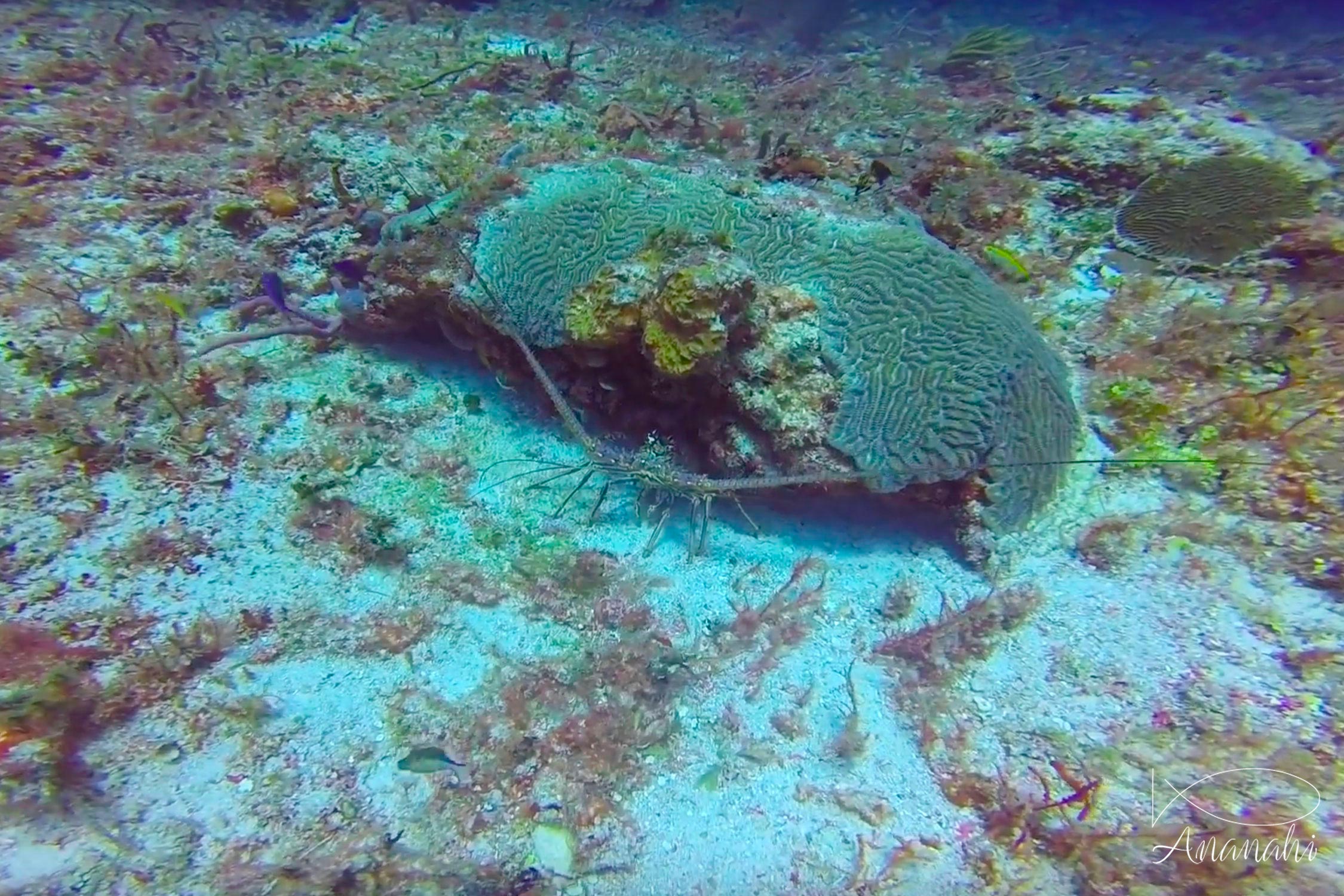
Scientific name: Panulirus versicolor
Size: 15.7 inches on average, up to 27.5 inches
Color: Blue and black with white and pinked
Distinguishing feature: Two white antennas with a pink base, longer than the body. Dark blue pasta with a white line, a curved horn above each eye.
Where did we see it: Bali and Gili, Zanzibar, Thailand, French polynesia, Mayotte, Maldives, Raja Ampat
It's often noticed thanks to these long antennas that protrude from the hole in which it hides.
It's an animal that comes out at night to feed and that we often find in the 49.2 feet zone.
The carapace of the lobster does not harden, it must moult when it becomes too big for its carapace. This is a difficult time for the animal because it is found defenseless, its shell is very soft at this time.
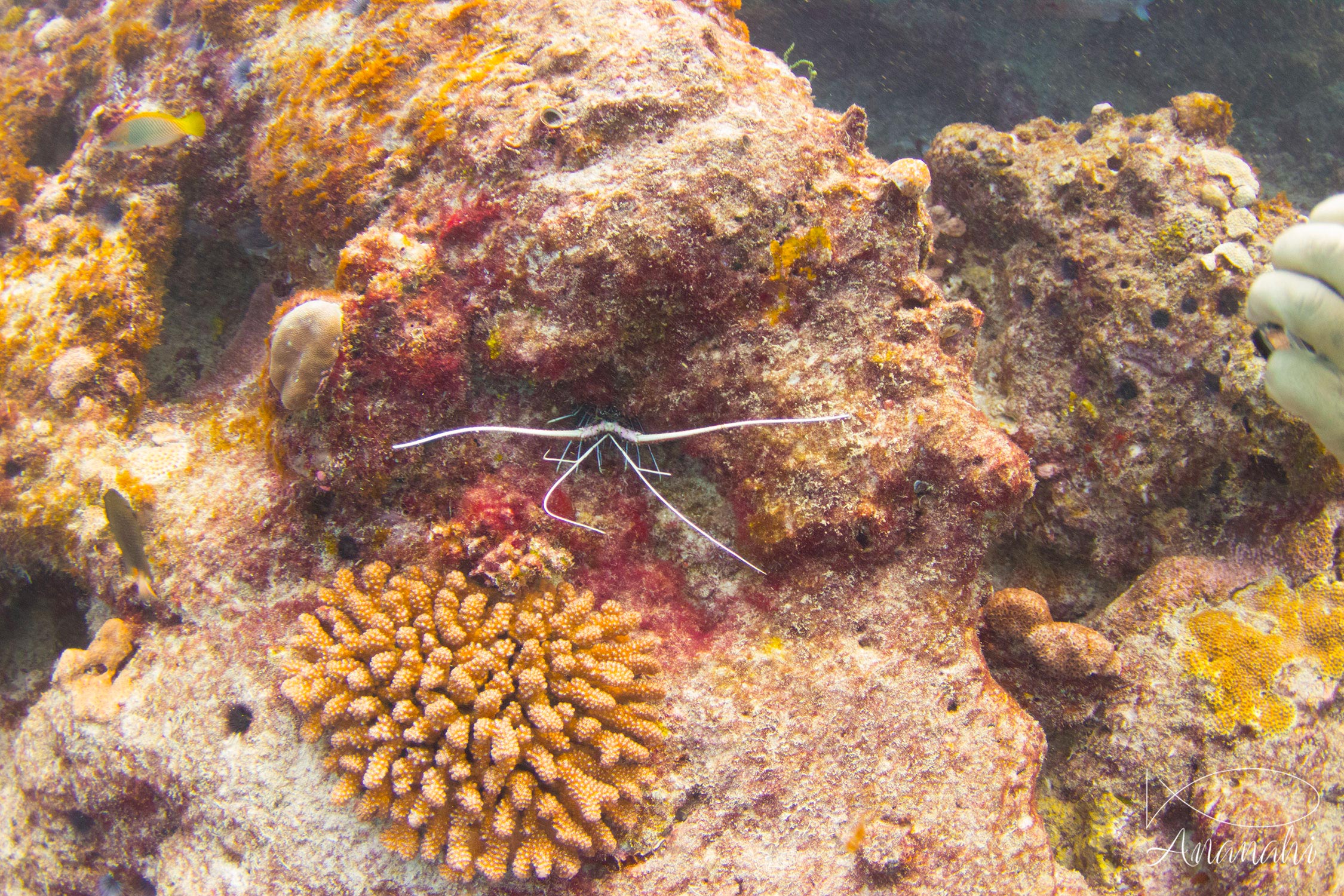

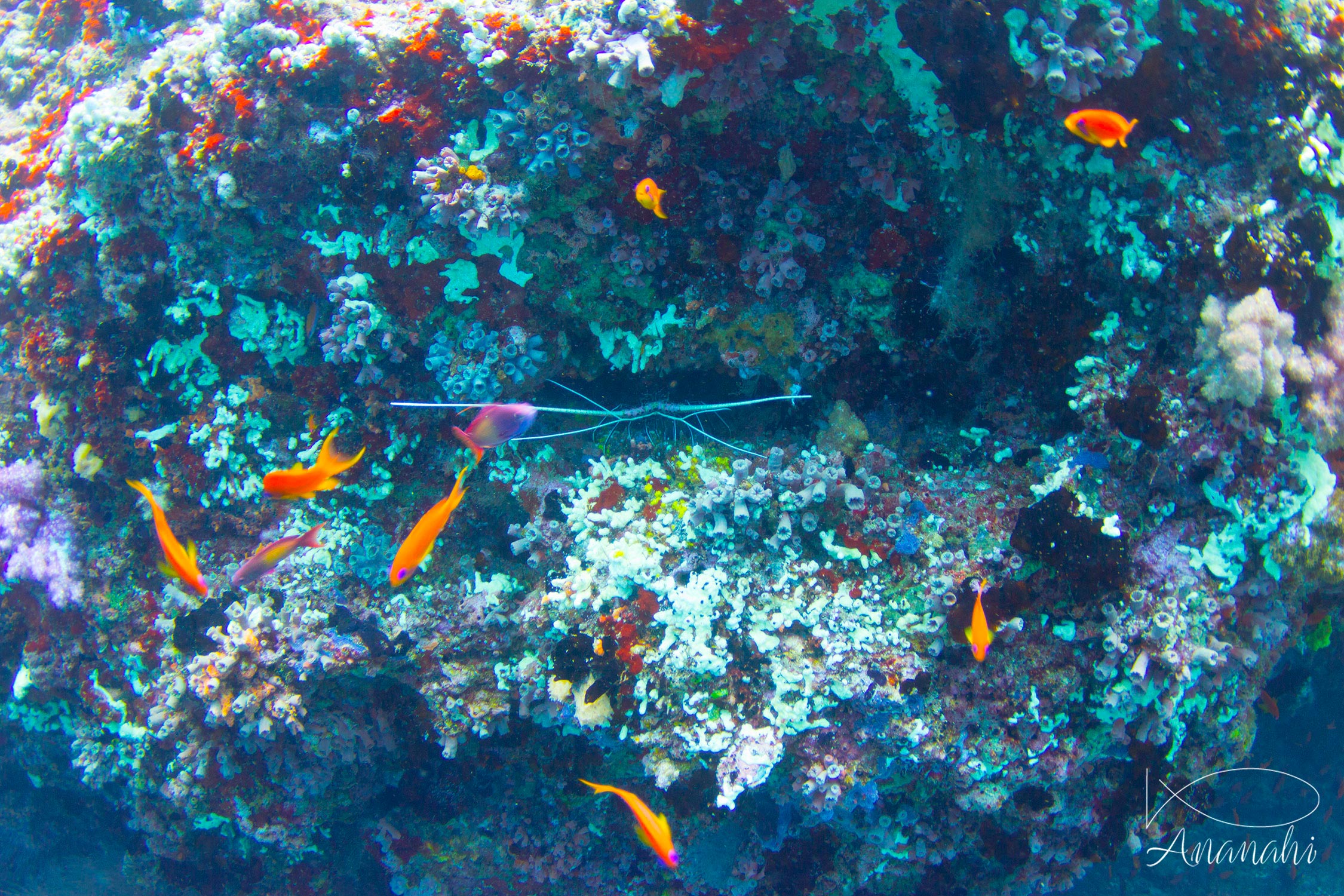
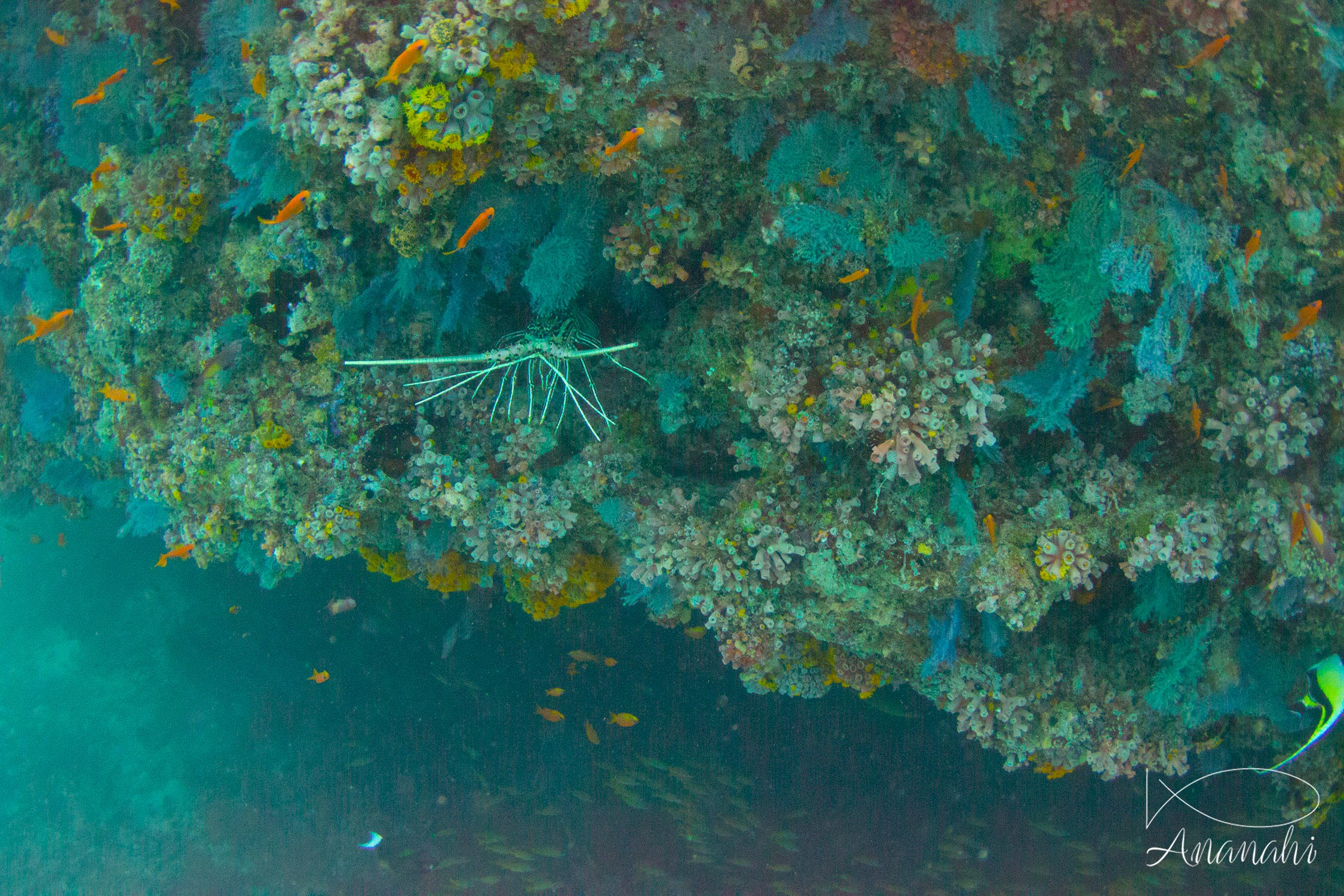

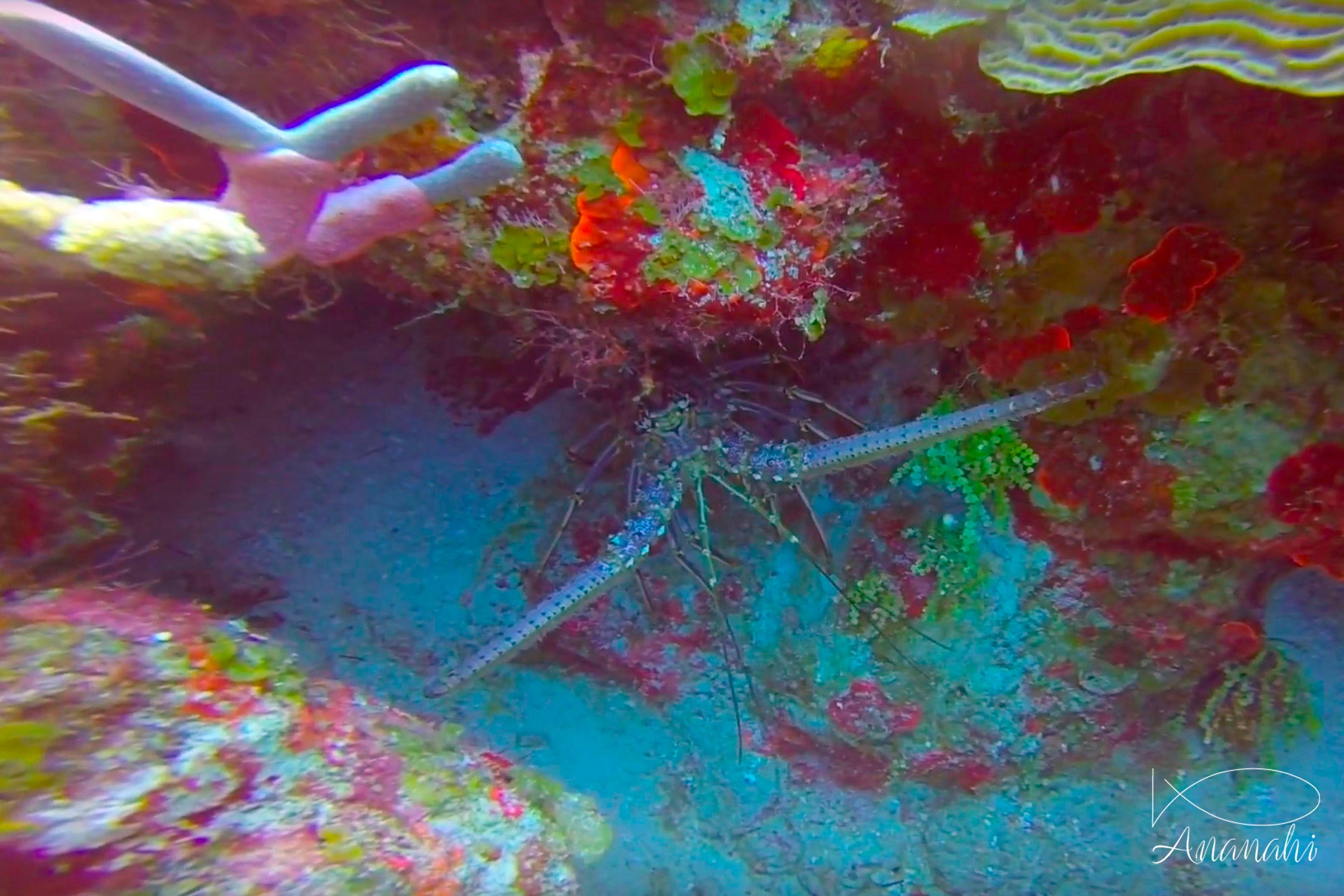

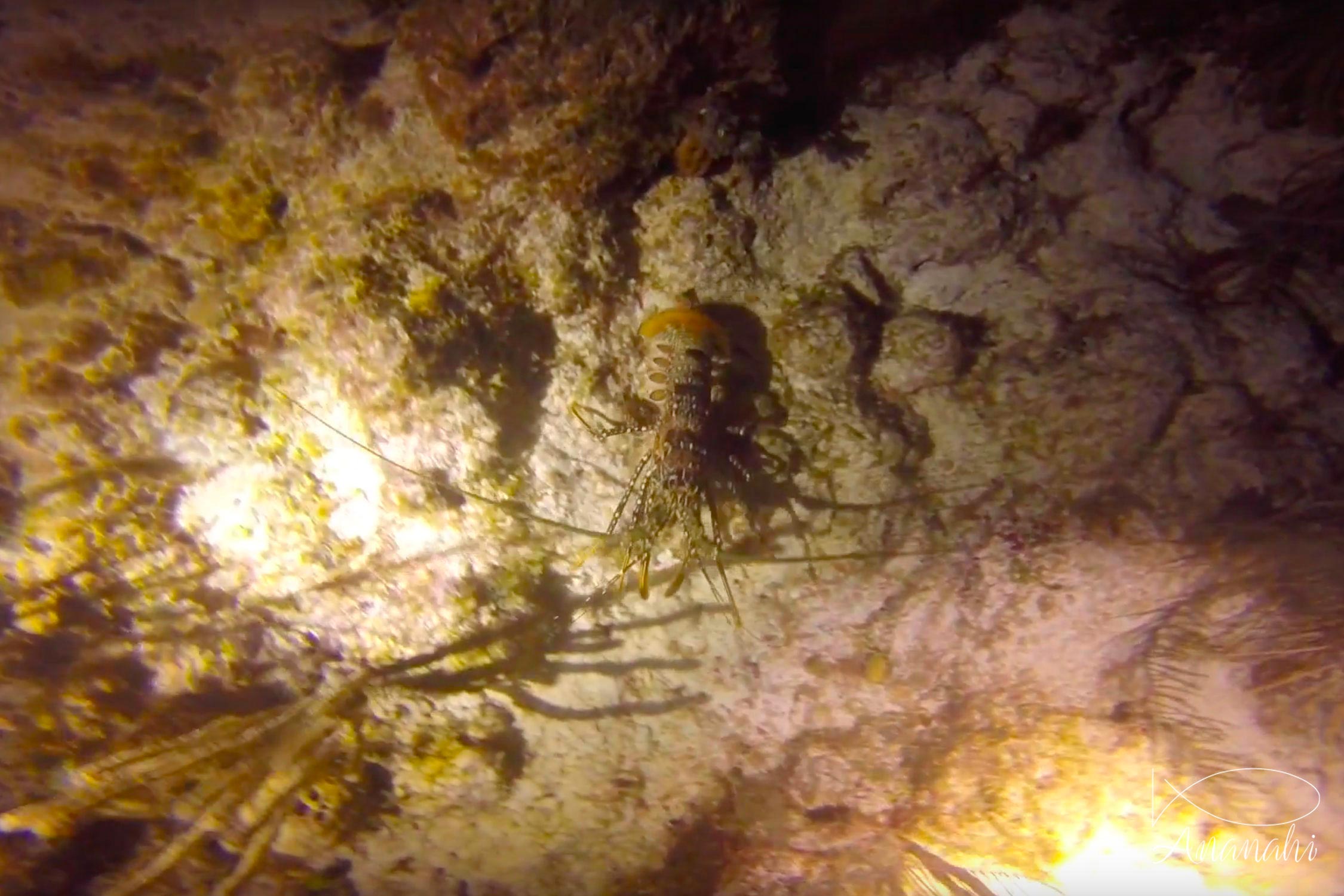
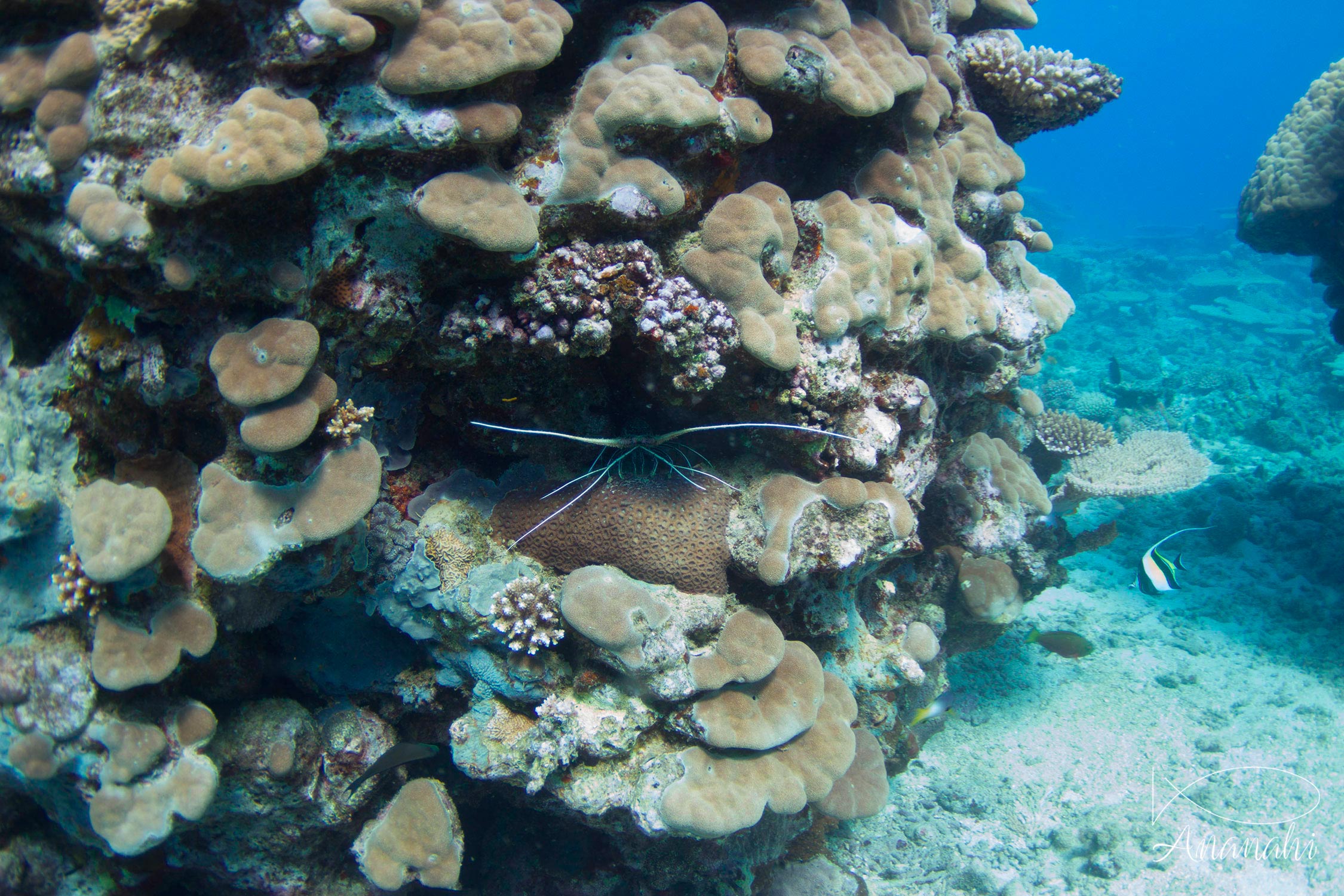
Some sharks can stay motionless on the sand (white tips reef sharks, nurse sharks, etc.).
These sharks don't have to swim to bring oxygen to their gills like other sharks (grey, hammerheads tc.)
The tiger shark has slender marks similars to the lines of tigers, hence its name.
When it is juvenile, these marks are round and not vertical. They change when it grows.
Mammals have a horizontal tail.
Fishes have a vertical fin.